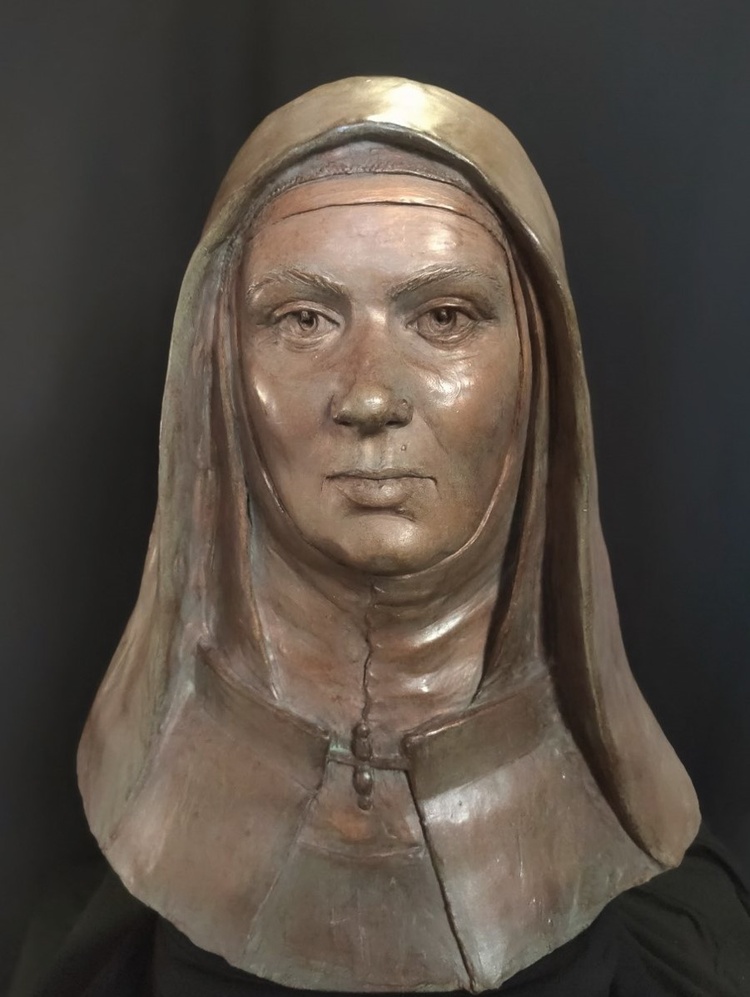A remarkably complex and evocative figure, there has always been a deep curiosity about the woman who gave away what should have been a comfortable life, given her family status, to instead join the Church and become a significant figurehead known for Catholic mysticism and austerity.
The fascination with the Saint has given rise to many artworks. She is the subject of a dramatic marble sculpture by Bernini – The Ecstasy of St. Teresa - housed in the Cornaro Chapel inside the Santa Maria della Vittoria Church in Rome. Rubens made her the subject of his portrait, Saint Teresa of Avila Interceding for Souls in Purgatory, a series of engravings by Adriaen Collaert, Cornelis Galle I and many others.
The interest to understand more about St. Teresa has recently linked Australia, Italy and Spain in a daring endeavour to reconstruct her likeness under the leadership of the Catholic Church.
On August 28 last year, the tomb of St. Teresa was opened for the first time in 110 years. It revealed her remains in a silver urn. The care for St. Teresa’s remains is of such significance that the silver urn requires 10 separate keys to open. Three of which are kept in Rome.
Incredibly, upon opening the tomb, it became clear that there was no sign of decomposition.
A research team from the Gabriele D’Annunzio University of Chieti, Pescara, was invited to study the remains of the Saint. The interest was both in understanding aspects such as preservation of remains, but also in St. Teresa herself. They wanted to answer the question, ‘What did St. Teresa really look like?’
Professor Ruggero D’Anastasio of the Abruzzese research team contacted Jennifer Mann, the Australian forensic sculptor, to ask if it was possible to do a forensic facial reconstruction (also known as an ‘approximation’) using the data they had gathered.
With this, the opportunity to bring St. Teresa to life had started.
To understand a little of the significance of the endeavour, it is important to understand why St. Teresa is deemed to be such a significant figure in the Catholic Church.
St. Teresa di Avila was a Spanish nun. She was a mystic who experienced powerful spiritual ecstasies and mortifications in her quest to attain perfection.
The Saint is the originator of the Carmelite Reform, bringing austerity back to the Order. Her reform required withdrawal from the world so that nuns could focus on meditation, prayer and penance. She insisted on poverty and subsistence through alms.
Teresa established 17 convents throughout Spain, often crossing tough terrain barefoot and in ill health to challenge those in power to be permitted to establish a convent in the area. She was even subject to a formal investigation during the time of the Spanish inquisition but was never brought to trial.
She was also a prolific writer, and her writings are still taught in literature classes in Spain. Her Life of the Mother Teresa of Jesus (1611) is autobiographical, while the Book of the Foundations (1610) describes the establishment of her convents.
Teresa also wrote numerous prayers and almost 500 of her letters are still in existence. Her literary life has led to many depictions of her holding a quill. Her life of devotion is often symbolised by a dove in artworks.
Yet, with all these artefacts and historical records, St. Teresa still remains a focus of much attention.
In 1970, Pope Paul VI recognised her extraordinary contribution by declaring St. Teresa the first woman of only two to be elevated to Doctor of the Church.
St. Teresa was considered to be beautiful in appearance, as well as graceful, witty and charming. However, till now, her appearance has only been depicted through art.
Through Jennifer Mann’s commission to reconstruct St. Teresa’s face, the world now has a way of viewing this remarkable saint.
Mann has developed quite an international reputation for her forensic reconstruction work, which lead to the Postulator General (Order of the Discalced Carmelites) P. Marco Chiesa commissioning her to undertake the complex reconstruction.
It was not an easy task and one that had to be completed in time for St. Teresa’s 510th anniversary of her birth on March 28, 1515.
“The main difficulty was that it was that it was not possible to do a CT scan on the remains,” Mann explained.
“When a CT scan is performed, it is possible to have a replica of the skull 3D printed - this is what would normally occur.
“In the absence of the CT data, I used x-rays and anthropomorphic measurements taken by the research team to recreate the skull in clay. This provided the basis for the reconstruction process.”
Mann used a variety of materials for the reconstruction which included oil- based clay, acrylic eyes (for correct placement of the eyes) which were later removed and plastic tissue depth markers.
Through careful attention to data collected around measurements at specific points across the skull, features such as the nose, lips and eyes came to life to reveal a striking woman.
More painstaking work continued to cross reference and double check data till the complete face emerged and Mann was satisfied with the sculpture. The sculpture, featuring a bronze patination, provides a sense of the Saint’s large, black round eyes, arched eyebrows and a gentle face.
Mann describes the feeling of seeing St. Teresa’s features reconstructed as “thrilling”.
“It was a very moving experience,” she continued, “I felt a great sense of responsibility to present St. Teresa as she may have really looked like.”
For many, the facial reconstruction is meaningful. For Catholics, it is an opportunity to contemplate the visage of the saint. For scientists, it is an opportunity to improve techniques for preserving and reconstructing human features.
“The importance of St. Teresa to so many people around the world motivated me to be strictly objective in order to do an accurate job - it’s not an artistic interpretation,” said Mann.
“In this way I feel that I have contributed to Saint Teresa’s legacy. As a sculptor, I’m particularly interested in creating public sculptures of significant women to ensure that women are properly recognised in history.
“St. Teresa was an extraordinary woman in the history of the Roman Catholic Church ... It has been an honour to do this work.”
To honour the saint during this particularly important anniversary year, the body of St. Teresa will be on display from May 11 – 25 at the Basilica in Alba de Torres in Salamanca, Spain. This event has only happened three times before: 1582, 1760 and 1914.
Mann’s work and the partnership between Pescara, Australia and Spain has led to a remarkable outcome for all who are interested in St. Teresa as a historical, religious and cultural figurehead.












